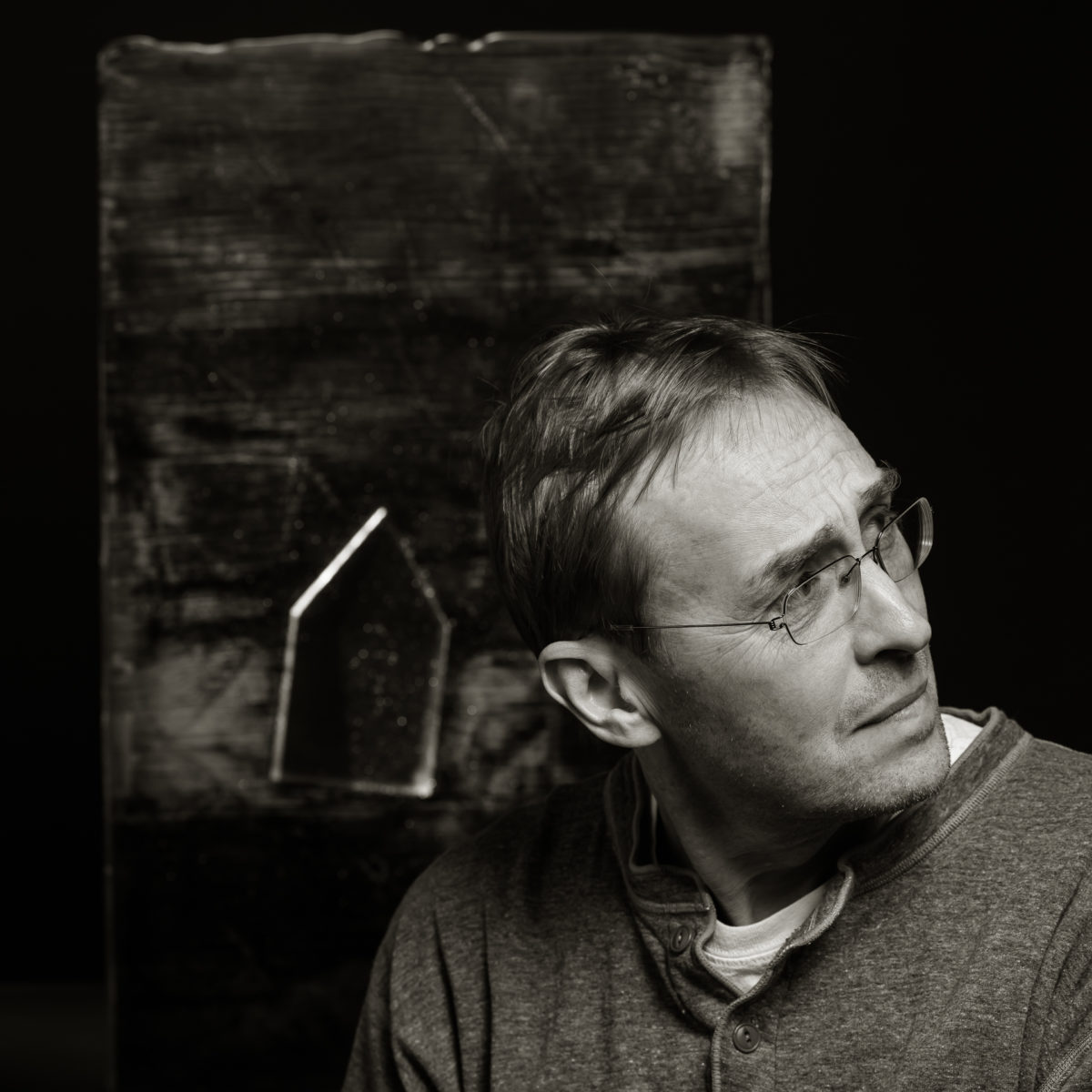
I didn’t know Charlie very well when he died. I only had a year. With every email, phone call or visit at the studio, I had felt like I was stealing time.
I talk to him often now.
His energy was dwindling in 2018-19, and I was reluctant to push. Because of the effects of chemotherapy, there were times he couldn’t communicate with me at all.
I had so many questions. I knew so little about glass, compared to him. I had never used some of the types of equipment he had. I had done a lot of glass fusing but only a little casting, and had never even heard of a sandbed kiln.

It was all a marvel to me, a magician’s trunk, and I wanted to learn every trick.
He answered me when he could. I always hungered to know more, and had to stop myself from asking dozens of follow-up questions. What did you use to make this texture? How did you create this special effect in the colors?
Charlie was patient and kind. Even when I left for the holidays with the big kiln running, and it got stuck at 1500 degrees for NINE DAYS – his eyebrows went up, but he didn’t yell or kick me out.
Whenever he visited the studio, he seemed to perk up. A little fire came back in his eyes. He had not been able to use it in almost two years, but being in the studio and talking about glass energized him.

He liked seeing it gradually coming back to life – reorganized, filling with new experiments, being used by other glass artists I brought in. He listened carefully and nodded approval when I talked to him about my plans to help him pay the rent.
I left on vacation July 5, and the day before I came home, I got the phone call. The dining table where I sat blurred as I gripped the phone.
I inherited not only Charlie’s glass and equipment, but his unfinished work, his notes, his sketches, and his firing schedules. Through these, Charlie continues to talk to me and teach me.
Firing schedules are the magician’s playbook. Each kind of glass technique, each design and form, has its own recipe for heating and cooling. Every piece is different. You learn every time you fire the kiln, and you keep records so that you can remember.
Here you can see exactly

how he made this piece…

and his exact layout

Charlie kept tidy firing schedules, on a form he made up and placed into binders. Each one is dated and annotated with the type of shelf used and how the glass was laid out.
His notebooks from workshops he took at Pilchuck and other glass schools are perfectly legible. Through them I have learned the techniques of some great instructors.
Charlie left an online guidebook, too. His posts and comments on the Warm Glass forum in the early 2000’s are detailed, carefully worded, sharing information rather than arguing.
But I was too busy, in those months last fall, to spend as much time as I wanted to with Charlie’s knowledge. I plunged into hosting workshops, giving lessons, and trying to market glass pieces. I had to get the studio space up to code, make it more comfortable and appealing for group use.

Detail from S.108 of the Shelter seriesYet when I stopped and asked Charlie a question, so often he would put the answer in front of me. I’d find a tool and suddenly know what it was for. I’d study a cast sculpture and the next day find a photo showing the kiln layout.
In April, during this second month of COVID-19 solitude, I was able to read Charlie’s notes carefully. Page after page of answers to my questions.
Now I know how he made that texture. It’s right there on March 13, 2004: Grass drawn with feather, scraped and pressed beads, Coke bottle, bark, knife cuts, bottle tops, light bulb, brush handle and bristles. Painting texture into sand, his hand movements captured in glass.
Now I know how he created the special color effects in his castings. He fired those pieces twice – one for each color – an approach I had never heard of. The details of how he did it are documented in 2009, 2013, 2014. The science of glass.

Now I know why he didn’t yell at me when I left the kiln running unmonitored. On November 8, 2005, he wrote a rare self-criticism: “Idiot left kiln holding at 1034 for a week.” Followed by, “Worked anyway.” I can almost see him shrug.
Some of his notes gave me ideas – techniques that I grabbed and ran with. Every time I read a new one I would rush to try it. “Thanks, Charlie!!”
Some of his contributions to the Warm Glass forum have taught me why he designed and built those big kilns the way he did – and what he would have done differently. These notes dovetail nicely with the folder of his drawings, specs and schematics. Charlie the mechanical engineer.
But some of the notes lead to more questions. What is a Biasucci flying carpet? Why did he fire pig bones to 1100 degrees?

In early 2016, he wrote out the firing schedule for his cast glass flags. The broken stripes and crisp stars, colors running like blood, seem so prescient now.
Then I turned to the next page. It was blank.
A whole section of blank pages.
But we’ll keep talking, and I’ll fill them in.
